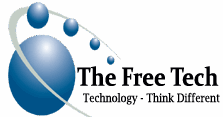Traditional application development techniques are highly restrictive and method. They entail a variety of procedures such as requirements, description, design, construction, testing, and deployment. All of which result in extensive cycle durations at each level. T
The traditional model necessitates projects with large teams and defined responsibilities, as well as careful documentation and evaluation at each level of development. The customer experience is minimal and occurs only at the start and conclusion of the contract. Every part of a project must be created from the ground up and cannot be duplicated.
Emerging and New Trends of Enterprise Applications:
Current and innovative trends in enterprise business applications are having a significant influence on application development. Let’s have a look at their major trends:
Whenever it comes to Enterprise Architecture, accessibility (UX) is the order of the day. The customer expects their applications to be more accessible and give material that is more appropriate to their specific business needs. However, designers will have to concentrate more on accessibility and inclusive development in the upcoming year.
The consumerization of IT has influenced the changing landscape of Enterprise Applications. Therefore, today’s technology is focused on the customer. The necessity of business imperatives is underlined.
Horizontal scaling, commodity computers (cloud) – Nowadays, applications can be accessed, created, and customized on the cloud. For consumers of Enterprise application development frameworks, cloud technology has boosted convenience and efficiency of use.

Rapid Application Deployment & Low-Code Development:
RAD (rapid application delivery) or low-code development is the latest enterprise trend. Enterprise Application Development is becoming more company and simple because of less coding. Clients are involved in the project at every stage.
Enterprise applications are supplied as a separate real-time service with a properly defined API thanks to the development of Loose Coupling and microservices. Microservices help in the provision of system similar updates to an application at a quicker rate.
The “drag and drop” trend in Microsoft’s components addition is also relevant with.NET, and technologies like ADO.NET make it much easier to communicate across database and non-connective platforms in app development.
Final Verdict:
The type of project is a key factor in deciding which business enterprise application development framework software platform to use. However, the project is simple and has to be delivered fast. The developers will choose basic solutions such as CMS (WordPress) and construct a great number of built-in tools and settings.
When working on a large or major project, a variety of technology is important to provide smooth integration across many platforms. Maintaining an integrated development environment is crucial. However, keep portability situations in mind and concentrate on the most important features.
If you want to know more about Customize web application development for enterprises and SDLC rapid application development process Contact us!
You may also like
-
IPTV Abonnement: The Key to Unlimited TV Entertainment
-
E-commerce Automation Tools: Revolutionizing Online Retail
-
2.4 Ghz and 5 Ghz difference, which is right for your wireless network?
-
All That Sparkles: A Manual for Wholesale Diamonds
-
What Is the Role of Managed Cybersecurity Services in Protecting Your Business?

